

Kenji Urada. Kenji Urada (c. 1944 — July 4, 1981) was a Japanese engineer who was one of the first persons reported to have been killed by a robot.
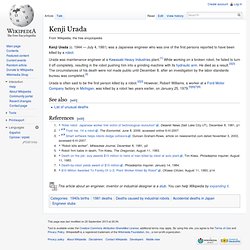
Urada was maintenance engineer at a Kawasaki Heavy Industries plant.[1] While working on a broken robot, he failed to turn it off completely, resulting in the robot pushing him into a grinding machine with its hydraulic arm. He died as a result.[2][3] The circumstances of his death were not made public until December 8, after an investigation by the labor standards bureau was completed.[4] Urada is often said to be the first person killed by a robot.[2][3] However, Robert Williams, a worker at a Ford Motor Company factory in Michigan, was killed by a robot two years earlier, on January 25, 1979.[5][6][7][8] See also[edit] List of unusual deaths References[edit] Voluntary Human Extinction Movement.
Leafy sea dragon. The leafy seadragon or Glauert's seadragon,[1] Phycodurus eques, is a marine fish in the family Syngnathidae, which also includes the seahorses.

It is the only member of the genus Phycodurus. It is found along the southern and western coasts of Australia. Spinosaurus. Description Size Life restoration of S. aegyptiatus Since its discovery, Spinosaurus has been a contender for the longest and largest theropod dinosaur.
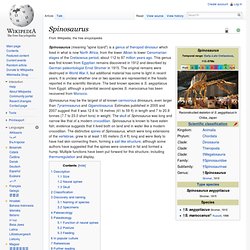
Both Friedrich von Huene in 1926[1] and Donald F. Mon (emblem) Mon (紋?)
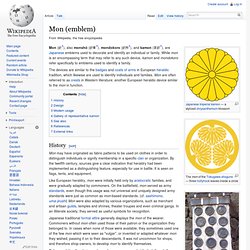
, also monshō (紋章?) , mondokoro (紋所?) , and kamon (家紋?) , are Japanese emblems used to decorate and identify an individual or family. While mon is an encompassing term that may refer to any such device, kamon and mondokoro refer specifically to emblems used to identify a family. Mon may have originated as fabric patterns to be used on clothes in order to distinguish individuals or signify membership in a specific clan or organization.
Centralia, Pennsylvania. Centralia is part of the Bloomsburg-Berwick micropolitan area.
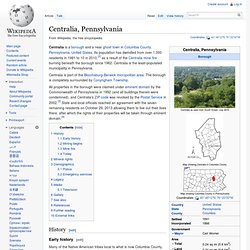
The borough is completely surrounded by Conyngham Township. All properties in the borough were claimed under eminent domain by the Commonwealth of Pennsylvania in 1992 (and all buildings therein were condemned), and Centralia's ZIP code was revoked by the Postal Service in 2002.[3] State and local officials reached an agreement with the seven remaining residents on October 29, 2013 allowing them to live out their lives there, after which the rights of their properties will be taken through eminent domain.[4] History[edit] Early history[edit] Many of the Native American tribes local to what is now Columbia County, Pennsylvania sold the land that makes up Centralia to colonial agents in the year 1749 for the sum of five hundred pounds (over half a million pounds or $800,000 in today's money).
The Centralia coal deposits were largely looked over before the construction of the Mine Run Railroad in 1854. Jevons paradox. The Jevons paradox has been used to argue that energy conservation may be futile, as increased efficiency may increase fuel use.

Nevertheless, increased efficiency can improve material living standards. Further, fuel use declines if increased efficiency is coupled with a green tax or other conservation policies that keep the cost of use the same (or higher).[3] As the Jevons paradox applies only to technological improvements that increase fuel efficiency, policies that impose conservation standards and increase costs do not display the paradox. History[edit] Goodhart's law. Goodhart's law is named after the banker who originated it, Charles Goodhart.
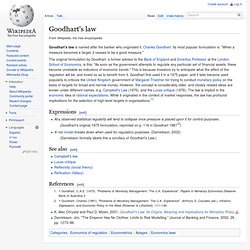
Its most popular formulation is: "When a measure becomes a target, it ceases to be a good measure. " The original formulation by Goodhart, a former advisor to the Bank of England and Emeritus Professor at the London School of Economics, is this: "As soon as the government attempts to regulate any particular set of financial assets, these become unreliable as indicators of economic trends.
" This is because investors try to anticipate what the effect of the regulation will be, and invest so as to benefit from it. Goodhart first used it in a 1975 paper, and it later became used popularly to criticize the United Kingdom government of Margaret Thatcher for trying to conduct monetary policy on the basis of targets for broad and narrow money. However, the concept is considerably older, and closely related ideas are known under different names, e.g. Theo Jansen. Theo Jansen (born 1948) is a Dutch artist.
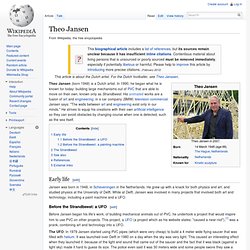
In 1990, he began what he is known for today: building large mechanisms out of PVC that are able to move on their own, known only as Strandbeest. His animated works are a fusion of art and engineering; in a car company (BMW) television commercial Jansen says: "The walls between art and engineering exist only in our minds. " He strives to equip his creations with their own artificial intelligence so they can avoid obstacles by changing course when one is detected, such as the sea itself. Early life[edit] Jansen was born in 1948, in Scheveningen in the Netherlands. Before the Strandbeest: a UFO[edit] Before Jansen began his life's work, of building mechanical animals out of PVC, he undertook a project that would inspire him to use PVC on other projects.
The UFO: In 1979 Jansen started using PVC pipes (which were very cheap) to build a 4 meter wide flying saucer that was filled with helium.